My growing obsession with unusual fruit reached its tipping point a few weeks ago, when I placed an order for a few new edible landscaping items: A cornelian cherry, two honeyberries, and two lingonberries. Friends, this is just the beginning.
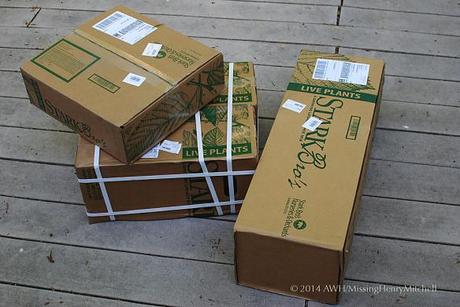
They’re here!
I started with the lingonberries. Lingonberries (Vaccinium vitis-idaea) are native to the northern reaches of North America, Europe, and Asia. As such, I’m taking a bit of a risk with these plants, as I live at the very edge of their heat-tolerance zone. They’re extremely cold-hardy. If I’d planted them last fall, they’d have shrugged off our polar vortex as a mild winter. With luck, they will spread by rhizomes to form a nice, tidy mat.
Like most Vaccinium species (blueberries and cranberries share the genus) they require moist, acidic soil. They also appreciate a bit of shade. I hope they’ll become an edible groundcover beneath my Southern highbush blueberries, which perform very well here.
They arrived in good condition. Inside the larger container, the plants came shipped in tall cardboard sleeves to keep the foliage from being crushed.
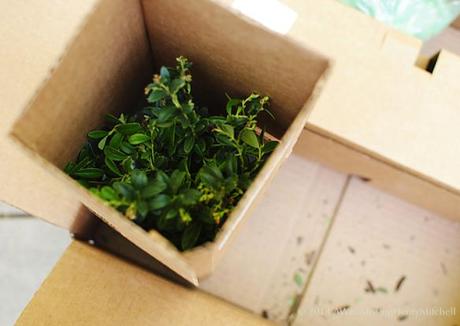
The lingonberries came packaged in tall cardboard sleeves.
The 4-inch pots came wrapped in plastic to keep the soil moist and inside the pot.

The pots, but not the foliage, were shipped in plastic to keep the soil moist.
Interesting looking moss came along for the ride.

I prepared the planting holes by digging them about six inches deep (the height of the pot) and about eight inches wide (twice the pot’s diameter). This is tricky to do because blueberries’ roots are shallow and brittle, and they don’t appreciate having their roots jostled and broken. Into the holes, I mixed a little homemade compost and some soybean meal. Soybean meal, available at feed stores, acts as a slow-release fertilizer high in nitrogen. It will release its nutrients to the blueberries and loganberries over the course of the summer. I don’t expect to need to feed them again this year, particularly because my acid clay is already high in phosphorus and potassium, though I’ll monitor the soil using free soil tests from the county extension service.
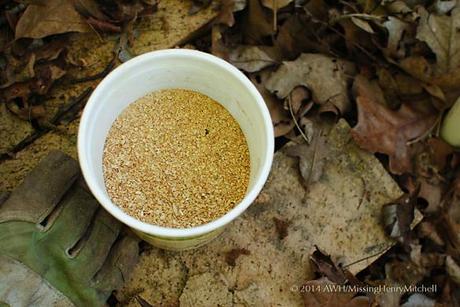
Soybean meal is typically used as a feed stock for poultry or pigs, but it’s an excellent slow-release source of nitrogen.
I slipped the plants out of their pots. The roots look healthy, although they”ll need to be loosened a bit.
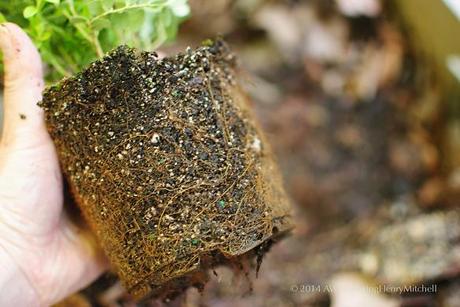
Plant roots should be loosened before planting, especially if they begin to grow in circles around the pot like this. But I’ll need to be careful with the brittle roots.
I placed the plant in the hole, gently spreading out the roots, and covered with more compost. I watered it in, and spread up some of the existing pine bark mulch. I later mulched the entire bed with three inches of shredded pine bark.
The blueberries and lingonberries grow in a raised bed composed of native acid red clay and decomposed pine bark. The lingonberries will enjoy the dappled shade of the blueberry foliage, and will receive some additional shade from the side of the deck. Between this and regular deep watering, I hope they’ll get the break from the summer heat that they need.
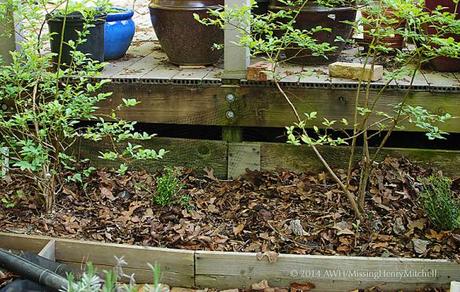
The lingonberries and blueberries grow in a raised bed of native clay and decomposed pine bark.
Lingonberries typically produce two crops of fruit per year, in late summer and again in late fall. I’d be surprised if they fruited this summer, but perhaps I’ll get a crop around Thanksgiving or Christmas. Once the fruits begin to form, I’ll shelter them in my blueberry fortress.
Here’s a guide from Cornell University on growing lingonberries.

